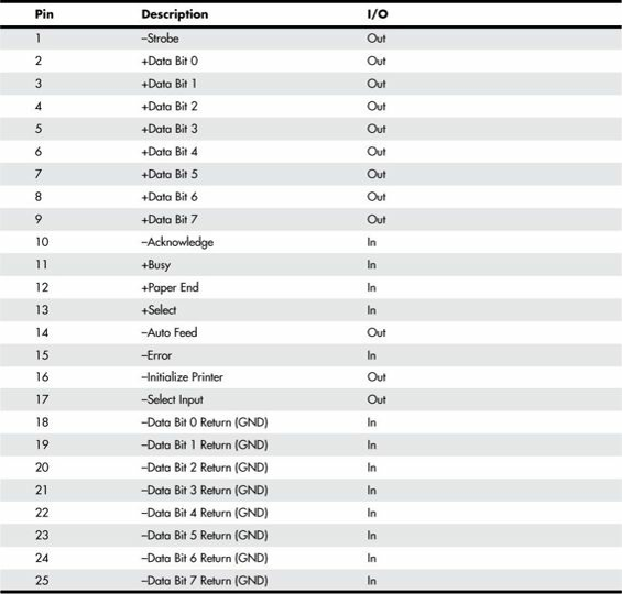Hardware Reference
In-Depth Information
EEE 1284 Parallel Port Standard
The IEEE 1284 standard, called “Standard Signaling Method for a Bidirectional Parallel Peripheral
Interface for Personal Computers,” was approved for final release in March 1994. This standard
defines the physical characteristics of the parallel port, including data-transfer modes and physical
and electrical specifications. IEEE 1284 defines the electrical signaling behavior for a multimodal
parallel port that can support 4-bit modes of operation. Not all modes are required by the 1284
specification, and the standard makes some provision for additional modes.
IEEE 1284 pertains only to hardware and line control and does not define how software talks to the
port. An offshoot of the original 1284 standard has been created to define the software interface. The
IEEE 1284.3 committee was formed to develop a standard for software that is used with IEEE 1284-
compliant hardware. This standard contains a specification for supporting EPP (Enhanced Parallel
Port) mode via the system BIOS.
IEEE 1284 enables higher throughput in a connection between a computer and a printer or between
two computers. The result is that the printer cable is no longer the standard printer cable. The IEEE
1284 printer cable uses twisted-pair technology, which results in a much more reliable and error-free
connection.
The IEEE 1284 standard also defines the parallel port connectors, including the two preexisting types
(Type A and Type B) and an additional high-density Type C connector. Type A refers to the standard
DB25 connector used on most PC systems for parallel port connections, whereas Type B refers to the
standard 36-pin Centronics-style connector found on printers. Type C is a high-density 36-pin

